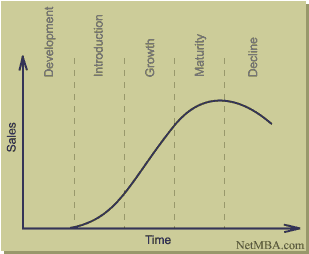أنشئ حسابًا أو سجّل الدخول للانضمام إلى مجتمعك المهني.

The product life cycle represents the amount of revenue a product generates over time, from its inception to the point where it is discontinued. The five stages of a product's life are development, introduction, growth, maturity, and decline. In the development stage, the product isn't yet being sold, so there is no revenue. During introduction, sales are small as people begin to try the product. Sales will increase during the growth phase, peak during maturity, and eventually decline as the market shifts or better alternatives become available. There is no set time span for a given stage; the entire cycle may last only months, or a product like the refrigerator may remain in the maturity phase for decades.

A project life cycle measures the work that goes into a project from beginning to end. The phases in product life cycle are initiation, planning, execution, and closure. During initiation, a business case and goals are created, and resources are assigned. During planning, the team researches solutions to reach the project goals and creates a plan and timeline to complete the project. Execution involves following each step on the project plan and adjusting as necessary along the way. Finally, in the closure phase, the project's final details are wrapped up and deliverable items like final reports are given to the appropriate parties.

article from
http://smallbusiness.chron.com/difference-between-product-lifecycle-project-lifecycle-20432.html

Agree with Mr. Mohammad Tohamy

The project life cycle differs by industry, organization, project type and encompasses sequential and overlapping phases.
The product life cycle does not differ regardless of the type of product, has sequential but non-overlapping phases, and may include multiple project life cycles.



